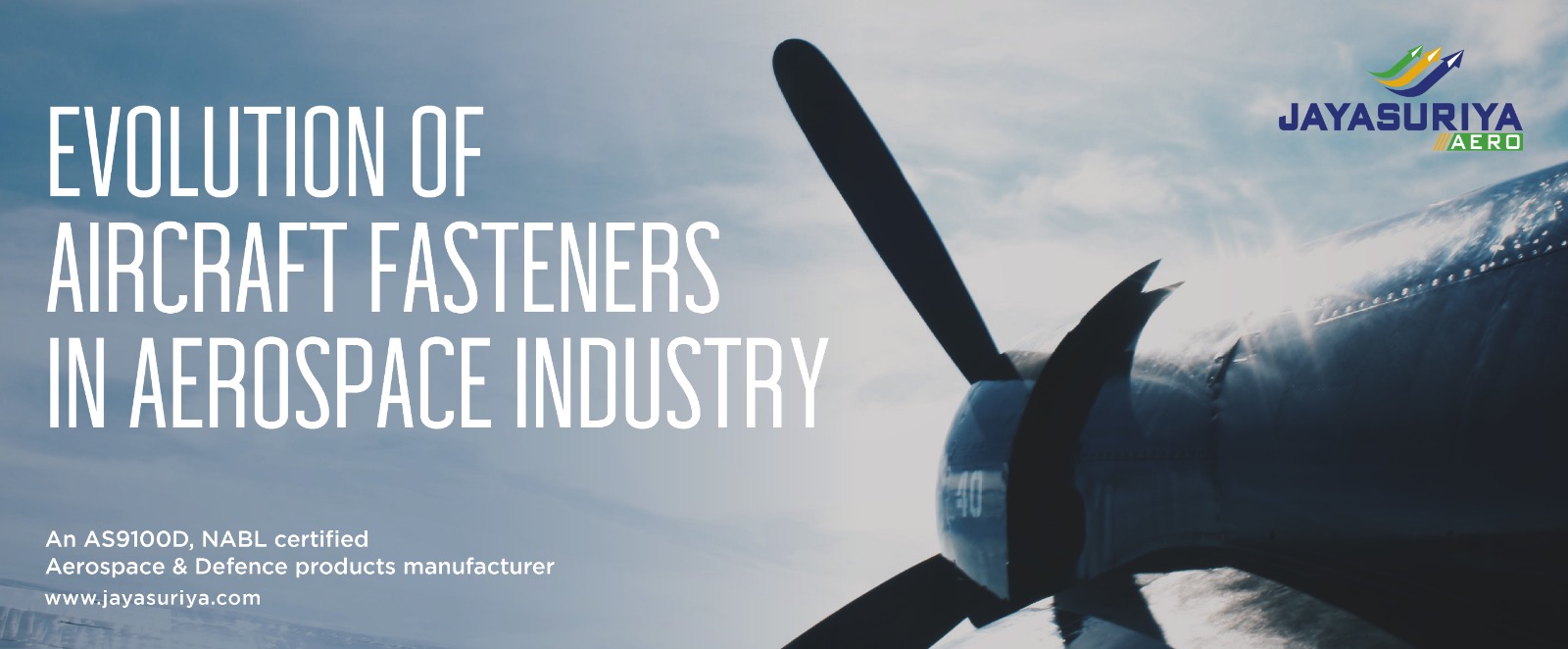The aerospace industry has witnessed remarkable progress over the past century, from wooden airframes to supersonic jets and reusable spacecraft. At the heart of this evolution lies not just advanced engines or sleek aerodynamics, but also the minute, often overlooked components that hold everything together: aircraft fasteners.
These essential elements have undergone significant transformation in design, material, and performance to meet the ever-growing demands of modern aviation. This blog explores the journey of aircraft fasteners through time and highlights their vital role in aerospace innovation.
The Early Days of Aircraft Construction
From Wood and Fabric to Metal
In the early 1900s, airplanes were primarily built using wood, canvas, and wire. Fastening techniques included simple nails, screws, and fabric stitching. These methods were sufficient for the light airframes of early aircraft like the Wright Flyer. However, as engine power increased and flight speeds grew, more robust materials and fastening methods became essential.
The Advent of Riveting
The shift from wood to aluminum frames in the 1920s and 1930s brought with it the need for stronger, more reliable fasteners. Riveting became the standard. Rivets provided high shear strength and were relatively easy to install in large quantities. During World War II, rivets were extensively used in the mass production of military aircraft like the B-17 and P-51 Mustang.
Technological Advancements in Fasteners
Material Science and Metallurgy
As aircraft performance requirements grew more demanding, fastener materials evolved too. Steel and titanium began replacing traditional aluminum rivets due to their superior strength-to-weight ratios and corrosion resistance. Modern aircraft fasteners are often made from heat-treated alloys that can withstand extreme temperature variations and stress.
Introduction of Locking Mechanisms
In high-vibration environments like aircraft engines or wings, bolts can loosen over time. This challenge led to the development of self-locking nuts, safety wire systems, and cotter pins. These innovations added redundancy and reliability to critical assemblies, drastically improving flight safety.
Precision Engineering for the Jet Age
Rise of High-Speed and High-Altitude Aircraft
With the emergence of commercial jets and military fighters in the post-WWII era, the requirements for aircraft fasteners changed dramatically. Fasteners now had to withstand rapid pressure changes, supersonic speeds, and extreme aerodynamic forces.
Flush Fasteners for Aerodynamics
To reduce drag, aerospace engineers introduced flush fasteners—designed to sit level with the aircraft’s surface. This not only enhanced speed and fuel efficiency but also required precise machining and installation processes, elevating quality standards across the industry.
The Role of Fasteners in Composite Aircraft
The Composite Revolution
In recent decades, aircraft manufacturers like Boeing and Airbus have turned to carbon fiber and other composite materials for their airframes. These lightweight materials reduce fuel consumption and increase payload capacity. However, they also present new fastening challenges.
Hybrid Fasteners and Specialized Coatings
Fasteners for composite structures must account for different material properties such as thermal expansion, electrical conductivity, and vibration damping. Hybrid fasteners made of titanium and other advanced alloys are now used, often with special coatings to prevent galvanic corrosion between metal and composite parts.
Bonded vs. Mechanical Fastening
While adhesive bonding is increasingly popular in composite construction, mechanical fasteners still provide fail-safe load paths in critical areas. Engineers now use a mix of techniques to balance strength, durability, and weight optimization.
Quality, Compliance, and Traceability
Stringent Standards in Aerospace Manufacturing
The aerospace sector is governed by rigorous international standards like AS9100 and FAA regulations. Every aircraft fastener must meet these standards for quality, performance, and traceability. This level of precision ensures that even a single fastener can be tracked from manufacturing to installation and service life.
Non-Destructive Testing and Inspection
Fasteners undergo multiple inspection stages including ultrasonic testing, X-ray, and dye-penetrant tests. These non-destructive methods ensure the integrity of components without compromising their usability.
Digital Integration and the Future of Fastening
Smart Fasteners and Industry 4.0
As aerospace embraces digital transformation, even fasteners are becoming “smart.” RFID-enabled fasteners and torque-sensing bolts are beginning to appear in high-end applications. These technologies allow real-time monitoring of stress, vibration, and load—adding a new dimension of predictive maintenance and safety.
Additive Manufacturing and Customization
3D printing is opening new doors for creating customized aircraft fasteners on demand. Complex geometries, previously impossible or cost-prohibitive, can now be printed in titanium or other aerospace-grade materials with high precision and minimal waste.
Sustainability and Lightweighting Trends
Eco-Friendly Manufacturing
With rising pressure to reduce carbon emissions, fastener manufacturers are also focusing on sustainable practices. This includes the use of recycled metals, water-based coatings, and low-energy production techniques that align with the broader environmental goals of the aerospace industry.
Weight Matters
In aviation, every gram counts. Innovations in fastener design—such as hollow core fasteners or those with integrated locking features—help reduce overall aircraft weight, translating directly into better fuel efficiency and lower operating costs.
Holding the Future Together
The evolution of aircraft fasteners is a testament to how even the smallest components can play a pivotal role in shaping an entire industry. From rivets in biplanes to intelligent fasteners in space vehicles, their development reflects the dynamic progress of aerospace engineering.
For businesses looking to source reliable, high-performance fastening solutions for aerospace applications, Jayasuriya Aero offers the precision, quality, and support that today’s industry demands. With a commitment to innovation and compliance, Jayasuriya Aero helps your projects stay strong, safe, and future-ready.

